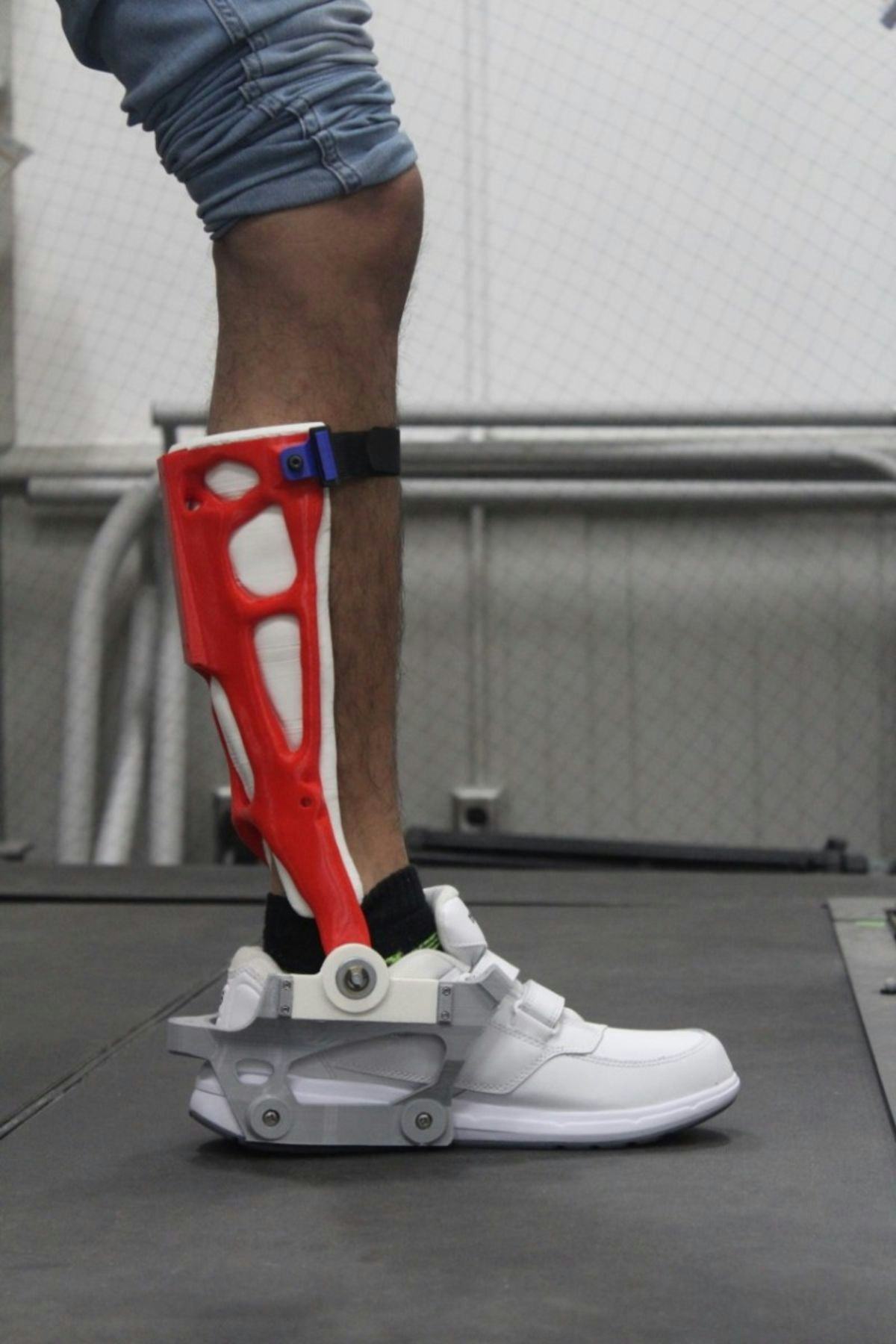Stevens Team Secures $1.19 Million from the DoD to Advance Robot-Assisted Exercise Therapy
The investigators will use artificial intelligence (AI) driven cyber-physical design to individualize treatment modalities for patients who have suffered lower limb trauma.
Principal investigator (PI) Damiano Zanotto, assistant professor of mechanical engineering, and co-PI Kishore Pochiraju, professor of mechanical engineering and associate dean for undergraduate studies, along with co-PI Dr. Karen Nolan of the Kessler Foundation, have recently been awarded a grant of $1.19 million from the Department of Defense for their project "Machine Learning Methods to Individualize Powered Orthotic Intervention for Improved Functional Recovery after Lower Extremity Trauma."
Lower-extremity traumas account for nearly 345,000 hospitalizations registered in North America every year. About one third of these injuries are limb-threatening. Reconstructive surgery may prevent limb loss, but limb salvage patients often suffer chronic pain, muscle weakness, and diminished sensation, leading many to opt for late amputation. The prescription of ankle-foot orthoses (AFOs) combined with rehabilitation programs may promote functional recovery, reduce pain, and decrease late amputation rates. However, customizing the design of an AFO for best comfort, fit, and function – all important factors to promoting patient acceptance – involves substantial skilled labor and multiple design re-adjustments.
Emerging powered AFOs can serve as mobility aids to complement a patient’s motor ability without inhibiting ankle movements and serve as a clinical tool for gait rehabilitation to facilitate the patient’s transition to unassisted walking. Yet, existing powered AFOs for gait rehabilitation do not fully address one of the key aspects of exercise-based therapy: the possibility of individualizing the interventions to the patient’s motor abilities.
Zanotto and Pochiraju’s project will address two major drawbacks of current orthotic technology for patients with reconstructed lower limbs: namely the lack of automated procedures to fabricate AFOs that conform to a patient’s body, in order to improve comfort; and the lack of control methods to self-tune the level of assistance of a powered AFO to the user’s changing motor performance, in order to promote their active participation in therapeutic exercises and ultimately enhance rehabilitation outcomes.
The team are building a new generation of robotic orthoses featuring patient-tailored form and function, which can be fabricated with less labor involvement and lower cost than traditional powered orthoses, using additive manufacturing technologies and a new machine learning-assisted design methodology. This research will also generate algorithmic support for future powered orthoses, to automatically tune the device’s response to the patient’s motor performance on-the-fly during walking exercises.
Taken together, these advances have the potential to impact the outcomes of future robot-assisted gait rehabilitation protocols, not only for limb salvage patients, but also for other populations (such as victims of brain injury) for whom exercise-based therapy is critical for functional recovery. In the long run, the project will also pave the way for more accessible patient-tailored powered orthoses, capable of administering individualized gait training exercises in the clinic or, potentially, in the comfort of the patient’s home.
"We are very excited about this new collaborative project between Stevens and Kessler Foundation,” said Zanotto. “It will be the first work combining machine learning design/fabrication methods and learning-based control methods to personalize form and function of a rehabilitation exoskeleton to the wearer’s leg morphology and changing motor performance, ultimately promoting the recovery of motor function.”
Pochiraju added, “Through our AI-mediated design techniques, customized orthotics that improve comfort, decrease pain, and encourage patients' active participation will emerge and a major impact on the quality of life for individuals who have sustained lower-leg reconstruction after severe lower leg traumas."
Learn more about mechanical engineering at Stevens:



